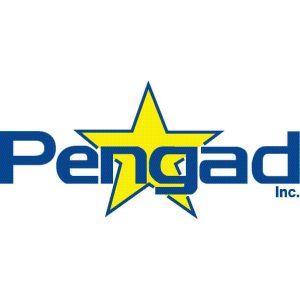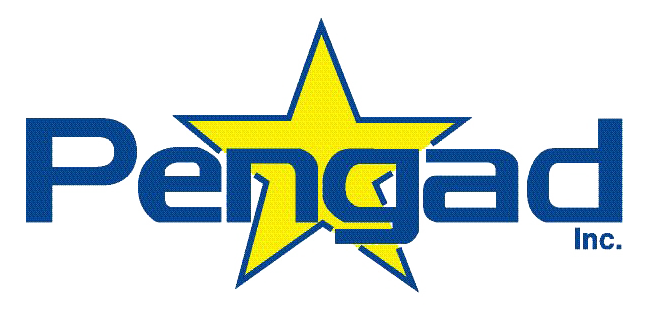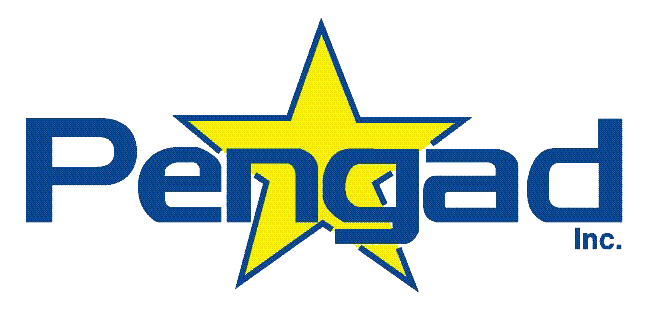1
1 Bit Graphics
An electronic image composed of pixels that are either on or off (like binary). Each pixel is either white or black with no shades of gray.
A
Accordion Fold
A binding term for two or more parallel folds that open like an accordion. Each fold is opposite the previous creating the pleated or accordion type effect. Brochures and maps often use accordion folds.
Aliasing
A pixelated or stair-step appearance that can occur when printing or viewing a low resolution image (below 300 pixels per inch) or outputting a file or image on a low-resolution drive. This is the what causes curves or diagonal lines to appear pixilated.
Aqueous Coating
A water based coating applied like ink by a printing press. These coatings can protect and enhance the printing underneath, a variety of aqueous coatings with different textures and finishes are available.
B
Blanket
A rubber-coated pad mounted on a cylinder of an offset press. The blanket receives the inked image from the plate and transfers it to the surface being printed on.
Bleed
Bleed refers to printing that goes beyond the edge of the sheet after trimming. A bleed lets the design of your final piece stretch from edge to edge without margins. Pengad requires an 1/8 inch bleed, meaning the design extends 1/8 of an inch from where the cut is to be made. (This means your document will be 1/4 inch wider and taller, this extra paper is trimmed off to the match the trim size.
Blind Folio
Page numbers on a design for reference but not printed on the final piece.
C
CMYK
This is an acronym for the four process color inks used in 4-color printing: Cyan, Magenta, Yellow and Black. Although the K commonly stands for black it does not have to. K is for “Key” plate. The Key plate holds the detail for the printed image, in 4-color printing this is usually black ink.
Coated Paper
Coated paper is paper which has been coated by a compound to give the stock certain unique qualities, including weight, surface gloss, smoothness or reduced ink absorbency. Coatings can be designed purely for aesthetics, for durability, or to create food-safe packaging. Printing on coated paper can give your piece added brilliance and character.
Color Bars
The strip of little colored squares on a press sheet or plate. These bars are a guide for pressmen to measure the amount and density of ink needed.
D
Debossing
Debossing is the same as embossing but the final product creates a recessed image rather than a raised image.
E
Embossing
Embossing is a process performed after printing that uses a metal die to reshape a printing surface, creating a raised image. Embossing can be applied to overprinting or on blank paper (called blind embossing). Blind embossing can be an especially effective and eye-catching effect when used with textured and embossed paper finishes.
Go to top
F
Four-Color Process Printing
Simulating the colors in a continuous tone color image by printing with process colors: Cyan, Magenta, Yellow and Black.
G
Gatefold
In a gatefold the left and right edges fold inward with parallel folds to meet in the middle of the page without overlapping. The paper may be folded again down the middle so the folded edges meet and a fold is created in the center panel of the paper – also known as a double gatefold. Also known as a window fold.
Ghosting
When an image is printed faintly on an area where it is not supposed to appear.
Gutter
The inside margin between two facing pages.
H
Hard Proof
A physical color proof made from stored digital data or production films.
Hot Stamping
A printing process where a heated die is stamped onto a sheet of foil, causing the foil to release from the backer onto the material being printed. We offer a full selection of opaque and metallic foils.
I
Imposition
An imposition is the arrangement of individual pages of a print piece on the printer’s sheet in order to facilitate faster printing, simplified binding and less waste of paper. Correct imposition minimizes printing time by maximizing the number of pages per impression, reducing cost of press time and materials.
K
Knockout
A portion of an image that has been removed. When two colors overlap in a design, both colors are not normally printed on top of each other. The bottom color is not printed in the area where the other color overlaps.
Knockout Type
Text that is reversed out of a dark background so it appears as the color of the paper underneath.
L
Lenticular Printing
Lenticular printing is a process in which a lens is applied to a specially printed image to produce an illusion of depth, or the ability to change or move as the image is viewed from different angles.
M
Margin
The non-printed area around the image area of a page.
Metallic Ink
Metallic inks are opaque inks that contain metallic particles to reflect light. Metallic inks are used to give your piece a shine or metallic look not achievable with regular inks. Metallic inks often look most vibrant on a coated sheet.
Metallic Paper
Metallic papers are coated with a thin metallic film that simulates metal.
O
Overprinting
Printing an image over an area that has already been printed. Overprinting is what allows process printing to create the whole spectrum of colors using only process colors. Overprinting also allows for the creation of rich black.
P
Pagination
The processes of numbering pages consecutively. Today this is often automated, saving a significant amount of time on pieces with a lot of pages.
Perfect Binding
A binding method using fast drying glues to hold the pages together and affix the cover along the spine. The final piece has a squared off spine.
Pica
A typographic measurement. One pica equals 12 points. There are approximately 6 picas to an inch.
R
Register Marks
The printed marks used to align color separations for printing so that each color registers with each other. These marks are printed using all the color separations of process printing so pressmen can check and adjust the alignment of each plate.
Reverse Type
When the type on a design is not printed so the color of the paper stock shows through. This is most effective when there is high contrast between the image and the stock.
RGB
RGB is an acronym for the three colors used to create the broad array of colors displayed on an electronic monitor. The three primary additive colors are Red, Green and Blue. RGB colors are used for electronic displays but do not reproduce well in print. RGB images should be converted to CMYK before your files are sent to the printer or it will be done during the pre-press process.
S
Saddle Stitching
The method of binding the pages of a section where the folded pages are stitched through the fold from the outside, using a wire staple.
Sheetwise
The process of printing one side of a press sheet with one set of plates and the second side with a different set of plates.
Synonyms: Work and Back (W&B)
Soft proof
A proof of your product delivered digitally and viewed on a digital display. Soft proofs are great for proofing content and layout.
Spot Color
A specially mixed ink which creates a specific color to be printed on press. Spot color inks are opaque, not translucent like process color inks. Printing with spot colors requires only one plate to print the color versus four when printing with process colors. Adding a spot color to a process job (usually done to ensure the color value of a logo or other standardized color) adds a fifth plate (one each for cyan, magenta, yellow, black and the spot color).
T
Trap
Trapping is the practice of overlapping two dissimilar colors that meet flush with each other to avoid gaps in coverage caused by misregistration.
Trim
The processes of cutting the excess paper from the edges of a press sheet. This is automated in production but often done by hand when proofing.
Trim Marks
Marks printed on a press sheet indicating where a piece is to be cut.
Trim Size
the final size of a book after it has been bound and trimmed.
Type Face
A style or design of type. Type Face encompasses shape, weight and proportions that make it distinct from other type faces.
Type Family
All sizes and weights of a basic type design. Members of a type family may vary in weight, width, or other treatment. A family may include roman, italic, extended, boldface, oblique or heavy treatments of a type face, among others. (Also called font family) EX: Helvetica is a type family / Helvetica Bold is a type face.
U
UV Coating
A liquid coating applied to the printed piece, which is then bonded and cured with ultraviolet light. This coating is used to provide a protective coating or added texture to the printed image.
V
Varnish
A thin, liquid protective coating, matte or glossy, applied over top of a printed piece. Varnishes can add protection and enhance the appearance of the final product. It can be applied over the entire piece or as a spot coating.
Vector
An object or path that is defined mathematically. This method is often used to create images in drawing programs. A vector image can be scaled up without worry about loss of quality because the image is defined mathematically and not by pixels. Adobe Illustrator, CorelDRAW, Macromedia FreeHand and Adobe Fireworks are common editors for vector graphics.
W
Work and Back (W&B)
The process of printing one side of a press sheet with one set of plates and the second side with a different set of plates.
Synonyms: Sheetwise
Work and Tumble (W&TUM)
A sheet proceeds through a press and is printed on one side. The gripper grabs the sheet and flips it over from head to tail and it is printed on the other side. The second time the sheet is run it is gripped from the opposite side as the original.
Work and Turn (W&T)
A sheet proceeds through a press and is printed on one side. The gripper grabs the sheet and flips it over from left to right and it is printed on the other side. The same gripper and plates are used for printing both sides.


